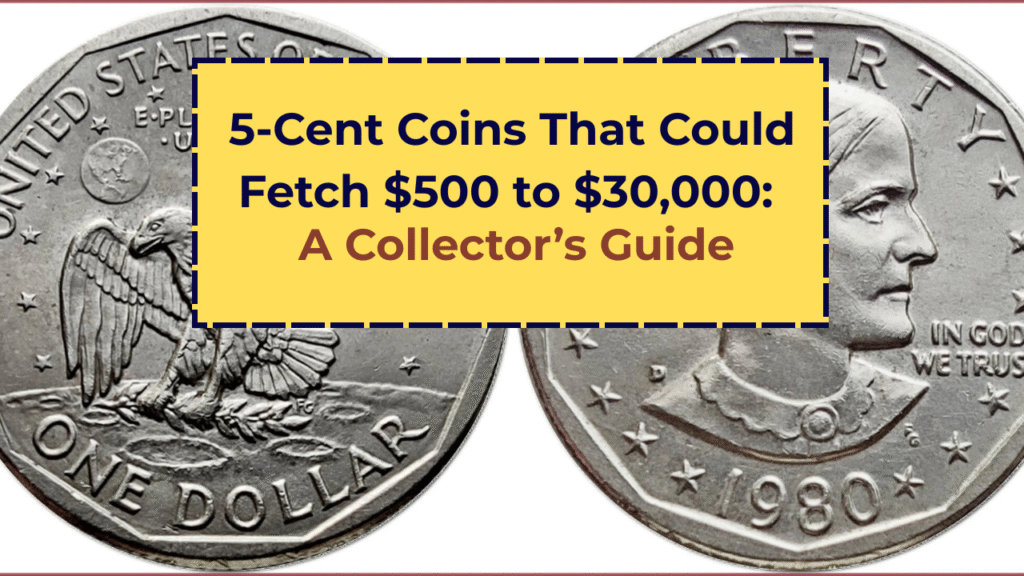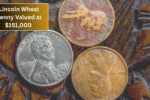Introduction
Finding treasure in your pocket change might sound far-fetched, but some 5-cent coins in circulation or tucked away in old collections can be worth a small fortune. While most nickels are only worth their face value, a few rare editions can fetch between $500 and $30,000 at auctions and among collectors.
Coin collecting, or numismatics, has long captivated history enthusiasts and treasure hunters alike. The value of a coin typically depends on its rarity, condition, and historical significance. In the case of certain 5-cent coins, minting errors, low production numbers, and age have driven up their value significantly.
Why Some 5-Cent Coins Are Valuable
The key to a valuable 5-cent coin lies in a few distinct features: minting year, mint mark, condition (or grade), and sometimes, minting errors. Coins that were produced in smaller quantities or have unique characteristics are more likely to become rare collectibles.
Some examples of attributes that drive up value include:
- Limited mintage: Fewer coins produced means greater scarcity.
- Minting errors: Misprints or irregularities such as off-center strikes, double dies, or missing elements.
- Historical context: Coins minted during wartime or economic transitions can become valuable over time.
- High grade: Coins preserved in excellent condition, graded by professional services, attract higher prices.
Let’s explore some of the most valuable 5-cent coins and why they command such high prices.
Notable 5-Cent Coins Worth $500 to $30,000
1. 1913 Liberty Head Nickel – Up to $30,000+
One of the rarest and most famous U.S. coins, the 1913 Liberty Head nickel was never officially released by the U.S. Mint. Only five are known to exist. While some of these have sold for over $4 million in major auctions, lesser-quality replicas or restrikes have still fetched tens of thousands.
Why it’s valuable:
- Extremely limited mintage (only five known originals)
- Historical intrigue and provenance
- Featured in prominent coin collections and museums
2. 1942-D Over Horizontal D Jefferson Nickel – $1,000–$15,000
This coin features a rare overpunched mint mark where a vertical “D” was struck over a horizontal “D”. These errors are highly prized by collectors.
Why it’s valuable:
- Rare minting error
- Limited number discovered
- High-grade examples command top dollar
3. 1939-D Jefferson Nickel (Reverse of 1940) – $1,500–$5,000
This coin from the Denver Mint combines the obverse from 1939 with the newer reverse design of 1940, creating a rare transitional variety. These coins are difficult to find in uncirculated condition.
Why it’s valuable:
- Transitional design error
- Low mintage of only 3.5 million
- Popular among Jefferson series collectors
4. 1950-D Jefferson Nickel – $500–$3,000
This is one of the lowest mintage circulation nickels in the 20th century. It was produced at the Denver Mint with only 2.6 million coins struck. Though not a mint error, its low supply makes it highly sought-after.
Why it’s valuable:
- Lowest mintage for Jefferson nickels in circulation
- Frequently hoarded upon release
- High demand in top condition
5. 2005-D “Speared Bison” Jefferson Nickel – $500–$1,000
In 2005, the U.S. Mint released a special series of nickels to commemorate the Louisiana Purchase and Lewis and Clark’s expedition. One of the bison designs from the Denver Mint had a visible die gouge that appeared as a spear through the bison’s back.
Why it’s valuable:
- Unique minting error
- Popular modern collectible
- Easier to find in circulation than older rare coins
How to Identify a Rare 5-Cent Coin
To determine whether your nickel is valuable, consider the following steps:
1. Check the Mint Mark and Date
Look closely at the front and back of the coin to identify the year it was minted and the mint mark. The mint mark is typically located near Monticello on Jefferson nickels.
2. Examine for Errors or Anomalies
Minting errors like double strikes, missing elements, or unusual lines can increase a coin’s value significantly. Use a magnifying glass or jeweler’s loupe to spot small details.
3. Evaluate the Condition
Coins are graded on a 70-point scale by services like the Numismatic Guaranty Company (NGC) or Professional Coin Grading Service (PCGS). Coins in “Mint State” (MS) condition, especially those graded MS65 or higher, tend to be worth more.
4. Compare with Price Guides and Auction Sales
Numismatic price guides or recent auction sales offer a benchmark for value. Keep in mind that market conditions and collector demand can influence prices.
Tips for Coin Collectors
- Handle with care: Always handle coins by the edges to avoid fingerprints or wear.
- Store properly: Use acid-free holders, albums, or certified slabs to preserve your coins.
- Stay informed: Monitor auctions, forums, and coin club newsletters to stay current with pricing trends.
- Get a professional appraisal: If you suspect you have a valuable coin, consider getting it authenticated and graded.
Conclusion
While most nickels in circulation today won’t make you rich, a few rare varieties can be worth hundreds or even tens of thousands of dollars. Whether you’re a seasoned numismatist or a casual hobbyist, keeping an eye out for these valuable 5-cent coins could lead to an exciting and profitable discovery.
From the elusive 1913 Liberty Head to the modern-day Speared Bison, these nickels represent the fascinating intersection of American history, minting artistry, and collector passion. So before you toss that old coin jar, take a closer look your spare change could be worth a small fortune.




